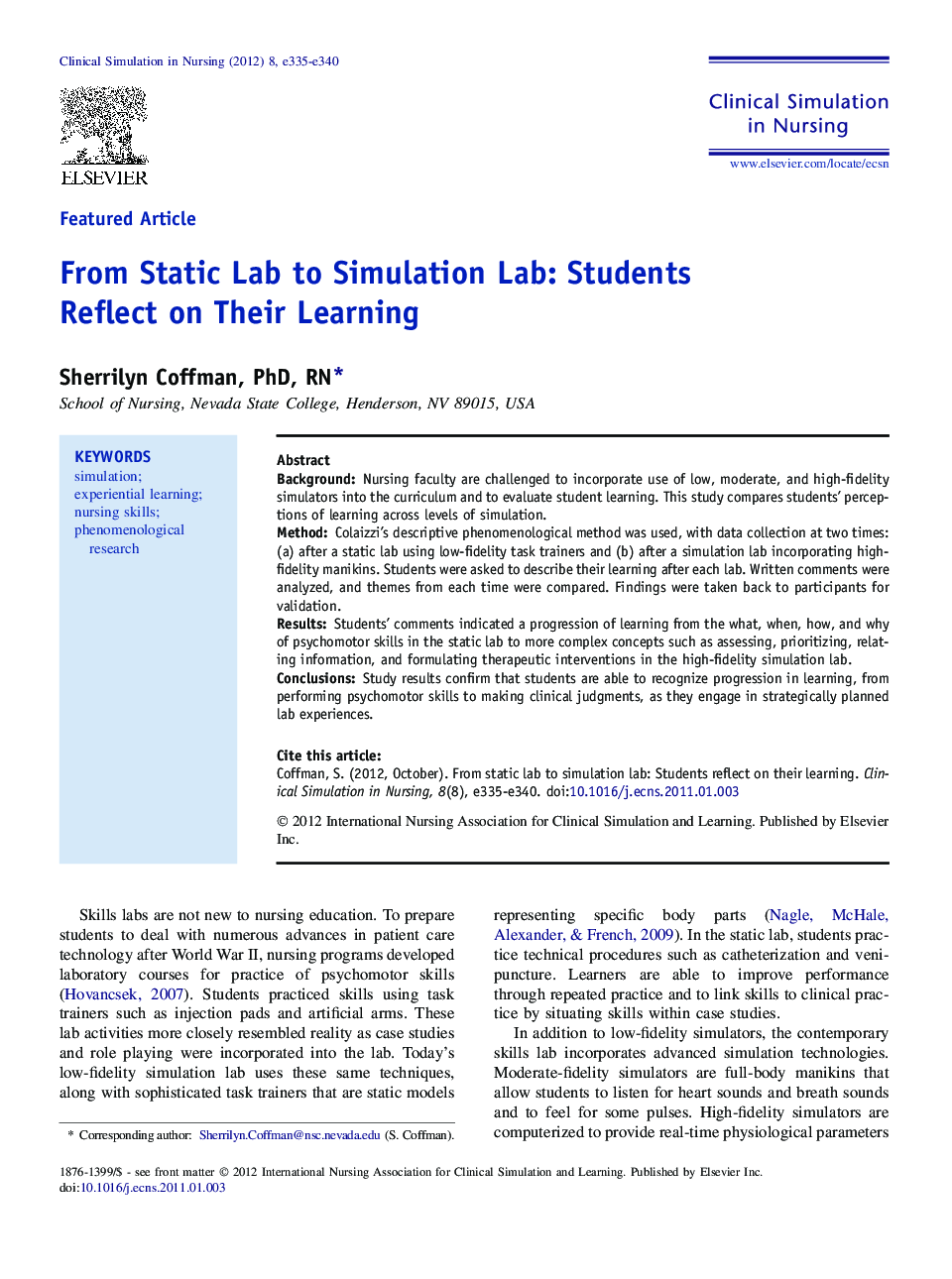| Article ID | Journal | Published Year | Pages | File Type |
|---|---|---|---|---|
| 2645770 | Clinical Simulation in Nursing | 2012 | 6 Pages |
BackgroundNursing faculty are challenged to incorporate use of low, moderate, and high-fidelity simulators into the curriculum and to evaluate student learning. This study compares students’ perceptions of learning across levels of simulation.MethodColaizzi’s descriptive phenomenological method was used, with data collection at two times: (a) after a static lab using low-fidelity task trainers and (b) after a simulation lab incorporating high-fidelity manikins. Students were asked to describe their learning after each lab. Written comments were analyzed, and themes from each time were compared. Findings were taken back to participants for validation.ResultsStudents’ comments indicated a progression of learning from the what, when, how, and why of psychomotor skills in the static lab to more complex concepts such as assessing, prioritizing, relating information, and formulating therapeutic interventions in the high-fidelity simulation lab.ConclusionsStudy results confirm that students are able to recognize progression in learning, from performing psychomotor skills to making clinical judgments, as they engage in strategically planned lab experiences.
